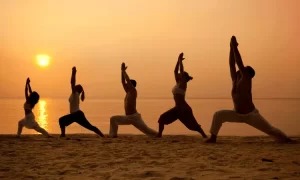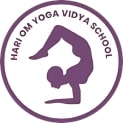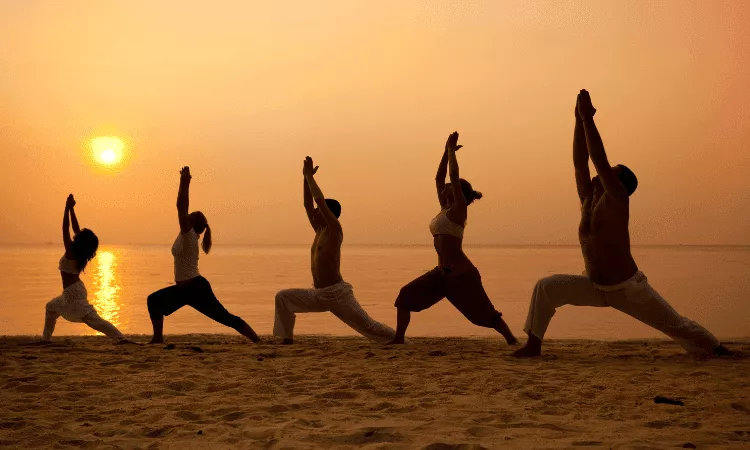YOGA CHRONOLOGY
B.C
| c. 2500 – 1800I | Indus civilization |
| c. 1800 – 1300 | Gradual invasion of India by the Vedic Aryans, hailing from central Russia. |
| c. 1200 | Probable date of the legendary Rishabha, the first `ford-maker` of Jainism. |
| c. 1200 – 1000 | Composition of the hymns of the Rig-Veda in archaic Sanskrit. |
| c. 1000 | The great war between the Pandavas (Arjuna`s clan) and the Kauravas reported in the Mahabharata epic. |
| c. 1000 – 900 | Composition of the magical hymns of the Atharva-Veda. |
| c. 1000 – 800 | Composition of the Brahmanas, works explaining and serving the sacrificial ritualism of the priestly estate of the Vedic society. |
| c. 850 | Yajnavalkya, ancient India`s most famous sage. |
| c. 800 | Vedic Aryan society spreads to northeast India; composition of the earliest Upanishads, such as the Brihad-Aranyaka and the Chandogya. |
| c. 700 | Beginnings of the medical teachings of the Sushruta-Samhita, a principal work on Ayur-Veda, north India`s native medical system. |
| c. 600 | The rise of the culture of Magadha (in the north- eastern corner of the Indian peninsula) which spawned the great heterodox traditions of Buddhism and Jainism; era of the sage Kapila, founder of the Samkhya tradition. |
| c. 599 -527 | Bardhamana Mahavira, founder of historical Jainism. |
| c. 563 – 483 | Guatama Siddhartha, the Buddha, founder of Buddhism, whose dates are sometimes given as 588 – 478. |
| c. 500 or 600 | Kanada, author of the Vaisheshika-Sutra, principal work of the Vaisheshika tradition within Hinduism; also probably time of Gautama, founder of the Nyaya tradition and composer of the NyayaSutra |
| c. 500 | Earliest portions of the Mahabharata epic. |
| c. 400 – 450 | Composition of the Katha-Upanishad, oldest Upanishadic work dealing explicitly with yoga. |
| c. 350 | Composition of the original Bhagavad-Gita, which later was incorporated into the Mahabharata epic. |
| c. 327 – 325 | Invasion of India by Alexander the Great. |
| c. 300 | Jaina Council of Pataliputra, after which ocurred the split into Digambaras (nude followers) and Shvetambaras (followers dressed in white). |
| c. 300 B.C. – A.D. 300 | Composition of the didactic passages of the Mahabharata epic, notably the Moksha-Dharma. |
| c. 269 (or 273) – 232 | Emperor Ashoka, who greatly furthered the dissemination of Buddhism; alternative dates are 268-231 B.C. |
| c. 200 B.C. | Composition of Jaimini`s Mimamsa-Sutra. |
| c. 200 B.C. – A.D. 200 | Era of greatest influence of Buddhism. |
| c. 200 B.C. – A.D. 200 | Date of origin of the hyms of the Tirumurai, the Tamil equivalent of the Vedas, collected as an anthology by Nambiandar Nambi in the eleventh century A.D. |
| c. 150 | Patanjali the grammarian, traditionally regarded as author of the Yoga-Sutra; probable date of Lakulin practicing Pahupatas and author of the Pashupata-Sutra. |
| c. 100 B.C. – A.D. 200 | Rise of Mahayana Buddhism; composition of the earliest Mahayana-Sutras, such as the Ashta-Sahasrika, the Lankavatara, and the Sad-Dharma-Pundarika. |
A.D
| c. 50 | Arrival of Buddhism in China; period of the renowned Buddhist teacher Ashvaghosha. |
| c. 100 | Probable date of Caraka, great authority on Ayur-Veda. |
| c. 150 | Probable date of composition of the Yoga-Sutra; period of the great Buddhist adept Nagarjuna; final redaction of the Manava-Dharma-Shastra. |
| c. 200 | Composition of the Brahma-Sutra of Badarayana, one of the fundamental works of the Vedanta tradition. |
| c. 350 | Composition of the Markandeya-Purana, one of the earliest works of this literary genre; probable date of the Jaina philosopher Kunda-Kunda; founding of the Buddhist Yogacara school by Asanga and of the Vijnanavada school by Asanga`s brother Basubandhu; Ishvara Krishna, author of the Samkhya-Karika. |
| c. 400 – 500 | Foundation of Nalanda, most renowned of all Buddhist monasteries; composition of the Ahirbudhnya-Samhita, an early Pancaratra (Vaishnava) work. |
| c. 450 | Composition of the Yoga-Bhashya, the oldest extant commentary on the Yoga-Sutra; probable date of origin of the Kapalika order of Shaivism. |
| c. 470 – 543 | Bodhidharma, founder of the Buddhist meditation (chan) tradition in China. |
| c. 550 – 800 | Gradual expansion of the Pancaratra (Vaishnava) tradition into south India. |
| c. 600 | Composition of the earlest Tantras, such as the Buddhist Guhya-Samaja and the Hevajra. |
| c. 606 – 647 | King Harsha, a patron of the arts, immortalized by the court poet Bana. |
| c. 638 – 713 | Hui-Neng, sixth and last patriarch of Chinese Buddhism. |
| c. 650 | Tirumular, renowned adept-bard of south India, author of the Tirumantira. |
| c. 750 | Padma Sambhava, the `precious guru`, who introduced Tantrism into Tibet`; probable date of the the Jaina philosopher Haribhadra, who authored several works on Yoga. |
| c. 700 | Gaudapada, author of the Mandukya-Karika and teacher of Shankara`s teacher Govinda. |
| c. 750 | Composition of the original version of the Yoga-Vasishtha. |
| c. 750 – 850 | Composition of the devotional Tamil poems of the twelve south Indian Alvars. |
| c. 788 – 820 | Shankara, the most renowned propounder of radical nondualism (Advaita Vedanta). |
| c. 800 | Emergence of the Buddhist Sahajayana; final composition of the Caraka-Samhita, one of the principal works on Ayur-Veda; probable date of the Tamil adept-bard Namm Alvar (Shatakopa); composition of the bulky Shakti-Sangama-Tantra. |
| c. 825 | “Discovery“ of the Shiva-Sutra by the Kashmiri adept Vasugupta, who also authored the Spanda-Sutra. |
| c. 850 | Composition of Vacaspati Mishra`s Tattva-Vaisharadi, an important subcommentary on the Yoga-Sutra. |
| c. 950 – 970 | Birthdate of the great Buddhist scholar and adept Abhinayagupta. |
| c. 988 – 1069 | Tilopa, great Buddhist adept and teacher of Naropa. |
| c. 1000 | Composition of King Bhoja`s Raja-Martanda, well-known commentary on the Yoga-Sutra; composition of NARADA`S Bhakti-Sutra; emergence of the Buddhist Kalacakrayana, an offshoot of Mahayana Buddhism; beginnings of the Kalamukha order of Shaivism. |
| c. 1000 – 1200 | Gradual disappearance of Buddhism from India. |
| c. 1000 – 1400 | Composition of Upanishads with a strong Shakta orientation. |
| c. 1012 – 1097 | Marpa, founder of the Kagyupa school of Tibetan Buddhism and teacher of Milarepa. |
| c. 1016 – 1100 | Naropa, great Buddhist adept and teacher of Marpa. |
| c. 1017 – 1137 | Ramanuja, one of the great preceptors of medieval Baishnavism, teacher of Qualified Nondualism (Vishishta-Advaita) and proponent of Bhakti-Yoga. |
| c. 1025 | Composition of al-Biruni`s partial translation into Arabic of Patatnjal`s Yoga Sutra. |
| c. 1040 – 1123 | Milarepa, Tibet`s most famous yogini-saint. |
| c. 1050 | Composition of Sekkirar`s Peria-Purana in Tamil. |
| c. 1050 | Goraksha, founder of the Kanphata sect and author of lost treatise entitiled Hatha-Yoga. |
| c. 1089 – 1172 | Hemacandra, famous Jaina philosopher and author of Yoga-Shastra. |
| c. 1100 | Composition of the Mahanirvana-Tantra. |
| c. 1106 – 1167 | Basava or Basavanna, reputed founder of the Ligayat tradition of south India, which is also known as Vira-Shaivism. |
| c. 1190 – 1276 | Madhva, founder of the dualist branch of Vedanta; his dates are sometimes given as A.D. 1199 – 1278. |
| c. 1200 – 1900 | Composition of a range of Hatha-Yoga scriptures, including the Yoga-Yajnavalkya (c. 1200), the Ananda-Samuccaya (c. 1300), and the Carpata-Shataka (c. 1300), and the Goraksha-Upanishad (c. 1400). |
| c. 1250 | Meykandar, author of the Shiva-Jnana-Bhoda, important Shaiva work in Tamil. |
| c. 1275 – 1296 | Jnanedeva, Maharashtra’s most renowned Yoga adept and author of the beautiful Jnaneshvari, a poetic Marathi commentary on the Bhagavad Gita. |
| c. 1300 | Possible date of origin of the Aghori order of Shaivism. |
| c. 1350 | Composition of the Hatha-Yoga-Pradipika, one of the standard works on Hatha-Yoga; composition of the Samkhya-Sutra ascribed to the ancient sage Kapila. |
| c. 1400 – 1518 | Kabir, a popular poet-saint of north India, who was instrumental in integrating Hinduism with Moslem teachings. |
| c. 1450 | Vidyaranya, author of the Jivanmukti-Viveka, a Vedanta work on the ideal of liberation during the embodied condition. |
| c. 1455 – 1570 | Drukpa Kunley, famous crazy-wisdom adept of Tibet. |
| c. 1469 – 1539 | Nanak, founder of the Sikh tradition and author of the Adi-Granth. |
| c. 1479 – 1531 | Vallabha, a renowned teacher of Bhakti-Yoga centering on worship of God Krishna. |
| c. 1485 – 1533 | Caitanya, one of the foremost Vaishnava teachers of Bengal and a great bhakti-yogin. |
| c.. 1550 | Vijna Bhikshu, author of numerous philosophical works, including commentaries on the Yoga-Sutra, notably his Yoga-Varttika. |
| c.1532 – 1623 | Tulsi Das, a widely influential north Indian poet-saint, composer of the Hindi Ramayana. |
| c. 1550 | Vijnana Bhikshu, author of numerous philosophical works including commentaries on the Yoga-Sutra, notablyhis Yoga-Vartika. |
| c. 1556 – 1605 | Emperor Akbar, greatest of India’s Moslem rulers. |
| c. 1650 | Composition of the |Gheranda-Samhita, a popular manual on Hatha Yoga. |
| c. 1718 -1775 | Ram Prasad Sen, celebrated Bengali poet and Kali worshipper. |
| c. 1750 | Composition of the Shiva-Samhita, a widely studied work on Hatha-Yoga. |
| c.1760 | Beginning of the British raj in India. |
| c. 1772 – 1833 | Rammohun Roy founder of the influential Brahma Samaj organization, who has been called the “father of modern India”. |
| c. 1834 – 1886 | Sri Ramakrishna, one of the great mystics of modern India. |
| c. 1861 – 1941 | Rabindranath Tagore, poet laureate of Bengal, a representative of the new Indian humanism. |
| c. 1862 – 1902 | Vivekananda, chief disciple of Sri Ramakrishna and founder of the Ramakrishna Mission, a key figure in the dissemination of Hinduism in Europe and America. |
| c. 1869 – 1948 | Mohandas Karamchand Gandhi, advocate of the principle of Nonharming (Ahimsa) in all areas of life, especially politics. |
| c. 1872 – 1950 | Sri Aurobindo, founder of Integral Yoga. |
| c. 1875 | Founding of the Theosophical Society, which established its headquarters in Adyar, India, in 1882; thanks to the efforts of this organization, many Sanskrit texts were translated into English for the first time. |
| c. 1879 – 1950 | Ramana Maharshi of Tiruvannamalai in south India, one of modern India’s most renowned sages and a staunch proponent of Advaita Vedanta. |
| c. 1947 | Political independence of India. |

Deepen Your Yoga Practice with Hari Om Yoga Vidya School
Located in the heart of Rishikesh, Hari Om Yoga Vidya School is a place where ancient yogic wisdom meets modern teaching techniques. As a top yoga school in Rishikesh, we are committed to providing authentic, immersive yoga education in a peaceful, spiritual setting. Recognized as one of the best yoga schools in Rishikesh, we offer structured training programs designed to help you evolve in your practice, whether you are a beginner or an experienced yogi.
If you’re searching for a yoga school in Rishikesh that focuses on holistic learning, experienced teachers, and a supportive community, look no further!
Explore Our Yoga Teacher Training & Retreats
At Hari Om Yoga Vidya School, we offer a range of courses tailored for different levels of practitioners:
✅ 100-Hour Yoga Teacher Training in Rishikesh – A foundational course for those looking to begin their yoga journey.
✅ 200-Hour Yoga Teacher Training in Rishikesh – An internationally recognized certification for aspiring yoga teachers.
✅ 300-Hour Yoga Teacher Training in Rishikesh – Advanced training to deepen your practice and refine your teaching skills.
✅ 7-Day Yoga Retreat in Rishikesh – A rejuvenating escape into yoga, meditation, and self-discovery.
✅ 10-Day Yoga Retreats in Rishikesh – A transformative experience that blends yoga, relaxation, and Himalayan serenity.
Join us for a life-changing experience and become part of our global yoga family! 🌿✨



